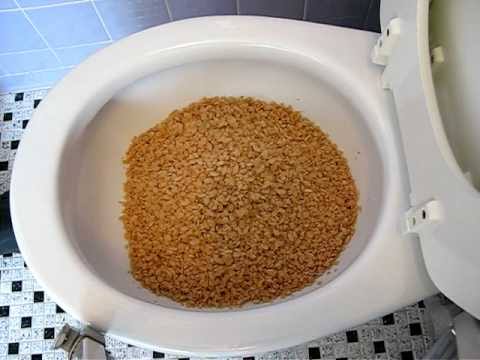Can One to Flush Food Down the Toilet?
Can One to Flush Food Down the Toilet?
Blog Article
What're your insights and beliefs about Think Twice Before Flushing Food Down Your Toilet?

Introduction
Many people are commonly confronted with the predicament of what to do with food waste, specifically when it comes to leftovers or scraps. One usual concern that occurs is whether it's alright to flush food down the toilet. In this short article, we'll look into the reasons individuals might consider flushing food, the effects of doing so, and different approaches for correct disposal.
Reasons that individuals could consider purging food
Absence of understanding
Some individuals might not be aware of the possible harm triggered by purging food down the commode. They might erroneously think that it's a safe method.
Comfort
Flushing food down the commode might appear like a fast and very easy remedy to throwing away undesirable scraps, particularly when there's no close-by garbage can offered.
Laziness
In many cases, individuals might just pick to flush food out of sheer idleness, without thinking about the consequences of their actions.
Effects of flushing food down the bathroom
Ecological impact
Food waste that ends up in rivers can add to air pollution and injury aquatic ecosystems. Furthermore, the water used to purge food can strain water sources.
Plumbing concerns
Purging food can bring about clogged pipelines and drains, causing costly pipes fixings and inconveniences.
Types of food that should not be flushed
Coarse foods
Foods with fibrous appearances such as celery or corn husks can obtain entangled in pipelines and cause blockages.
Starchy foods
Starchy foods like pasta and rice can absorb water and swell, leading to obstructions in pipelines.
Oils and fats
Greasy foods like bacon or cooking oils need to never be flushed down the commode as they can solidify and cause obstructions.
Correct disposal approaches for food waste
Making use of a waste disposal unit
For homes equipped with garbage disposals, food scraps can be ground up and flushed with the pipes system. Nevertheless, not all foods are suitable for disposal in this way.
Recycling
Specific food product packaging products can be reused, lowering waste and decreasing environmental impact.
Composting
Composting is an environmentally friendly way to take care of food waste. Organic materials can be composted and used to enhance soil for gardening.
The significance of correct waste monitoring
Lowering environmental damage
Appropriate waste management techniques, such as composting and recycling, help decrease contamination and maintain natural resources for future generations.
Protecting plumbing systems
By preventing the method of flushing food down the toilet, house owners can prevent costly plumbing repair work and preserve the integrity of their plumbing systems.
Conclusion
In conclusion, while it might be alluring to purge food down the commode for benefit, it is necessary to understand the prospective effects of this action. By adopting correct waste monitoring techniques and disposing of food waste sensibly, individuals can add to healthier pipes systems and a cleaner atmosphere for all.
FLUSH FOOD DOWN THE TOILET?
FLUSHING FOOD CAN CAUSE BLOCKED DRAINS IN YOUR HOME
All of the plumbing fixtures in your home are connected to the same sewer pipe outside of your home. This outdoor sewer pipe is responsible for transporting all the wastewater from your home to the Council sewer mains. Even small pieces of food that go down the kitchen sink can cause problems for your sewer. It should therefore be obvious that flushing larger bits of food, such as meat, risks a clog in either the toilet itself or the sewer pipes. Flushing greasy food is even more problematic because oil coagulates when it cools, coating the interior lining of your pipes.
THE TOILET IS NOT A BIN
Food isn’t the only thing that people shouldn’t be flushing down the toilet. People use the toilet to dispose of all kinds of things such as tampons, makeup wipes, dental floss, kitty litter and even underwear. Water goes to great lengths to educate residents about the high costs and stress placed on wastewater treatment systems simply from people flushing the wrong stuff down the toilet. It costs taxpayers millions of dollars each year, and homeowners thousands in blocked drain repairs.
FLUSHING FOOD IS A WASTE OF WATER
Flushing food is a waste of our most precious resource - water. In June this year Level 1 water restrictions were introduced to protect water supply from drought conditions. Much of New South Wales continues to be affected by prolonged drought with recent figures revealing up to 97 per cent of the state remains in drought. Depending on whether you have a single or dual flush toilet, every single flush uses between five and 11 litres of water. In the current climate this is a huge amount of water to be wasting on flushing food that should be placed in the bin (or better yet, the compost).
https://www.jabplumbingsolutions.com.au/blog/can-you-flush-food-down-the-toilet

I found that review about What Can Happen If You Flush Food Down the Toilet? when doing a search on the search engines. Liked our posting? Please quickly share it. Let someone else find it. Thanks so much for your time spent reading it.
Call Today Report this page